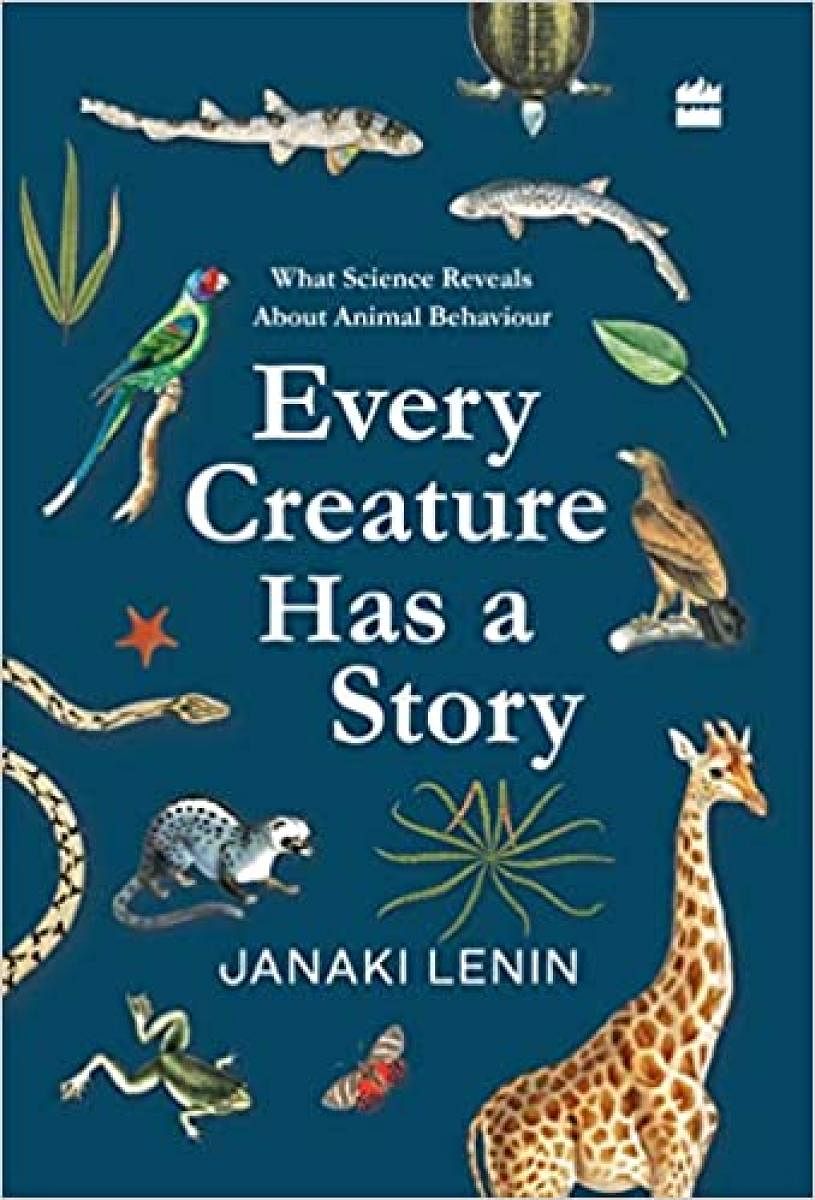
Janaki Lenin loves animals and she loves science. A few pages into her book, you will too.
From stories on male seahorses who become pregnant to courting octopuses that share their food ‘like lovey-dovey humans’ or ants that don’t wither with age, Lenin’s new book is an engaging mix of curiosity and science that will leave you marvelling, gobsmacked, and occasionally, laughing out loud.
Unlike her earlier books, which were written primarily for children, Every Creature Has a Story comprises 50 essays that delve deep into the whys and hows of some fascinating facets of animal behaviour. The selection was chosen from a weekly column that Lenin wrote for a national online magazine a few years ago and has been updated to include new research.
The essays are based on scientific research and incorporate opinions from experts in the field, often several of them. Lenin’s shtick is clear science communication. She transforms ponderous scientific writing from scholarly journals into eminently readable prose that keeps you turning the pages. It is very easy to lose yourself in this world that she opens up for you, a real world that is every bit as fascinating as anything that imagination can come up with. For pernickety and nerdy readers like me who want to read the original scientific papers, every source is cited.
The animals and their researchers are drawn from around the world. The collection also features a researcher from Bengaluru, K S Seshadri, who worked on white-spotted bush frogs, which lay eggs inside the hollow stems of bamboos growing on riverbanks. Interestingly, it is the dad who diligently looks after the eggs until they hatch to produce froglets, not tadpoles.
Human see, human do?
Every chapter has a wow factor. For example, a story about bearded capuchin monkeys in Brazil explains how they expertly wield specially-chosen rocks to break open cashew kernels. Capuchins at this site are veteran tool users. Generations of them have been using tools here for about 700 years, which means “the monkeys were pounding these nuts long before European colonisation of South America.” In fact, there is evidence for a long history of tool use by simians elsewhere too, which raises the question: Did humans learn how to break and eat tree nuts from the monkeys or as Lenin puts it, was there a case of ‘human see, human do’?
Along with the fauna, scientists are definitely the stars of the show. Instead of being portrayed as impersonal boffins clad in lab coats, we get to see them as real people, wisecracking about beer and parties one minute, full of the thrill of discovery the next. When Israeli scientist Hadas Ketter Katz’s experiments demonstrated how a chameleon’s two eyes works in coordination with each other even though they move in different directions, she was excited: “Just imagine me all alone in the lab screaming and jumping.”
Ants that laze around...
Evolution is a common theme that unites the 50 disparate stories in this collection. The Earth has a huge diversity of habitats. Over thousands and millions of years, the continuous interactions and the adaptations that organisms have made to these living conditions results in the amazing diversity we see in wildlife as well as in animal behaviour.
After laying their eggs, female grainy Cochran frogs pee on them and promptly abandon them. But, researchers found this seemingly heartless behaviour was crucial to the survival of the eggs. Eggs that had not been urinated upon became dehydrated, infected with fungi and had thinner shells that were no defence against prey. Natural selection also explains why elephants rarely get cancer, why some wasps get spiders to weave their cocoons for them and why some ant colonies have a group of ants whose envious job it is to laze around and do absolutely nothing.
A fast-disappearing bond
The tight relationship between an organism and its environment can be upset when the habitat changes or is lost. Temperature determines the sex of offspring in many reptiles, including turtles and crocodiles. In the bearded dragon lizard of Australia, both genes and temperature determine sex so that genetically male lizards can have ovaries and reproduce.
Scientists say climate change could lead to skewed population ratios in this species, and perhaps, an eventual crash. One of the most poignant stories is of the honeyguide in Africa. This small bird leads human honey gatherers to beehives; once the hunters drive away the bees and take the honey, the honeyguide eats the beeswax and the honeybee brood.
Scientists think this symbiotic relationship may have arisen around three million years ago, with a distant human ancestor. As people are moved out of national parks and as they switch to store-bought honey and sugar, the relationship between honeyguide and honey gatherer will soon be a story from the past.